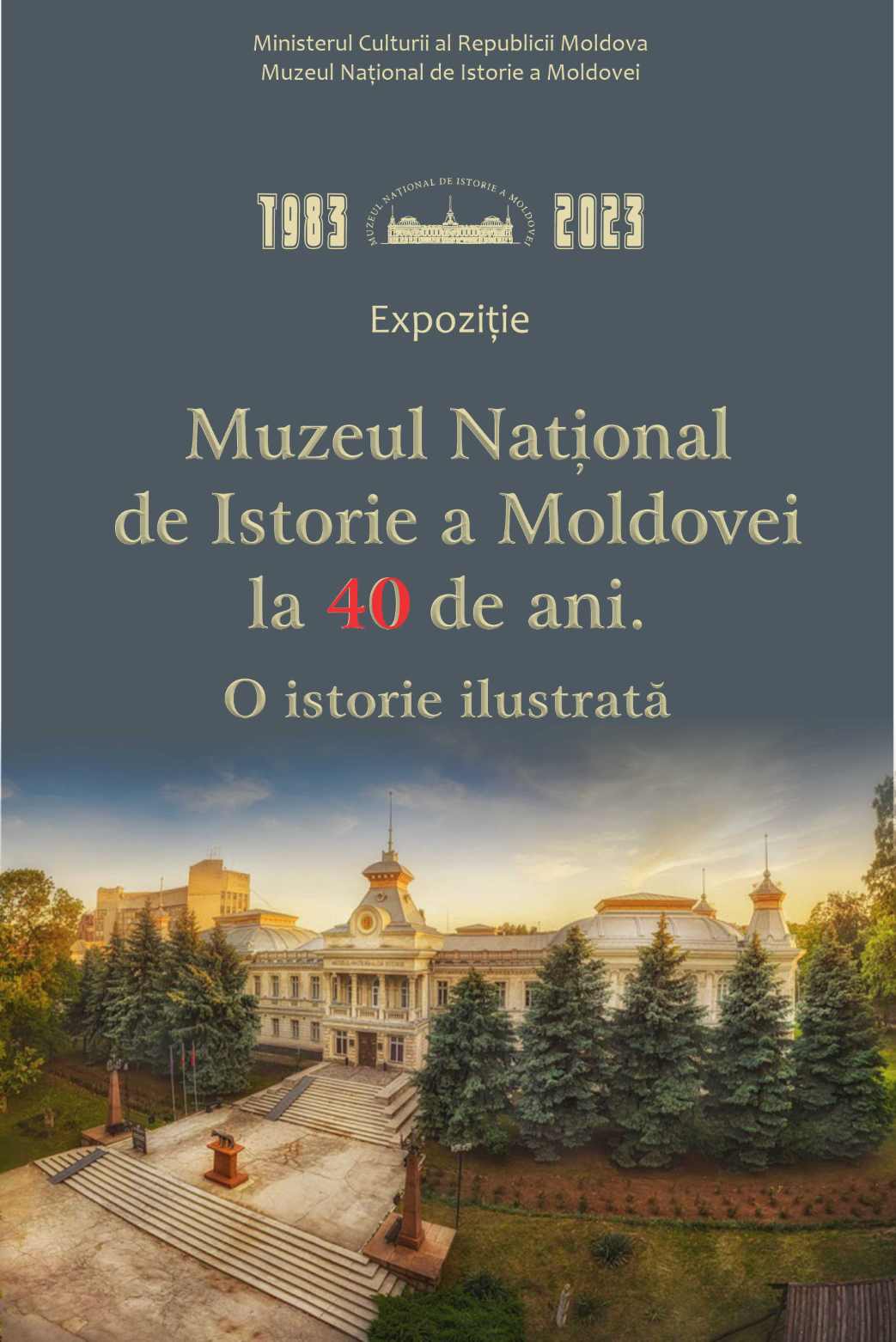 The anniversary exhibition offers the public a chronicle of the most memorable events and activities in the 40-year history of the National Museum of History of Moldova.
The anniversary exhibition offers the public a chronicle of the most memorable events and activities in the 40-year history of the National Museum of History of Moldova.
The deed establishing the museum is dated December 21, 1983, the day on which the order of the Ministry of Culture no. 561 regarding the establishment of the State Museum of History of the SSR. In 1991, by government decision, the name of the National Museum of History of Moldova was assigned to the museum.
Located in a monumental building in the heart of Chisinau, with 12 exhibition rooms and a diorama, with a total area of 5,700 square meters, having at the beginning a staff consisting of a few professional museographers and only a few thousand pieces of heritage, in a in a relatively short time, as a result of multiple conceptual, structural and organizational changes, but also thanks to the decisive contribution of the institution's staff, the National Museum of History of Moldova managed to transform from an institution for the application of official science into a genuine center for studying and promoting national history, keeper and protector of a valuable historical-cultural heritage.
Currently, the National Museum of History of Moldova owns a heritage that counts over 345,000 pieces of real historical, documentary and artistic value. The most significant museum collections were valued in the framework of numerous cultural-scientific events and thematic exhibitions, organized in the country and abroad, scientific symposia and conferences, articles and publicity notes in the periodical press, radio and television shows, organized by the museum workers.
The museographic projects, carried out during the 40 years of existence, aimed, equally, at the activity of completing and diversifying the museum heritage, the exhibition activity, as well as the activity of scientific and editorial research.
In 1987, the first temporary museum exhibition was inaugurated, and from 1991, the first permanent exhibition "Pages of multi-thousand-year history" began to operate, covering the historical period from the earliest times to 1940. Later modernized - both conceptually and from the point of view of the content and the way of presentation -, constantly supplemented with new pieces, equipped with modern audiovisual means, the museum's permanent exhibition today brings together the most valuable pieces of heritage, offering the public an overview of the evolution over time of history and civilization in this space, evoking extraordinary events and personalities that marked our destiny.
Since 1992, the most important results of scientific investigations in the field of history, archeology and museology are published annually in the Tyragetia museum magazine. In parallel with the magazine, catalogs of collections, brochures, monographs, collections of studies and articles are published. In collaboration with other prominent institutions in the country and abroad, the museum has carried out countless cultural-scientific projects, focused on the research and valorization of the cultural-historical heritage. They are brilliant performances that confirm its status as an indisputable authority in the field of scientific research, its status as a true temple of national history and culture.
The anniversary exhibition "The National Museum of History of Moldova at 40 years. An illustrated history" offers the public valuable information on the history of the creation of the museum, scientific and editorial activity, exhibition valorization of the museum heritage, cultural-educational activities, collaborative relations with scientific and cultural institutions in the country and abroad.
A separate compartment of the exhibition includes the publications of the museum and scientific staff, leaflets and posters of thematic exhibitions, promotional materials edited to promote the image of the museum and the activities organized within the institution.
The anniversary moment is one full of satisfaction and fulfillment for the museum team - museographers, researchers, restorers - for all those who have been and always remain in the service of the goddess Clio, who, through professionalism and dedication, make the history of this prestigious institution of culture and science .
 31 August 1989 St., 121 A, MD 2012, Chisinau, Republic of Moldova
31 August 1989 St., 121 A, MD 2012, Chisinau, Republic of Moldova





























































